SIGHT RADIUS! MAH IRONS! Sight radius has been a mainstay argument for 20 inch AR15s for a long, long time. Another common argument is comparing the sight radius of western peep sights v.s. open sights such as those found on the AK platform. While we may have made sight radius and irons sights redundant with red dots and magnification, it’s still a tool in the toolbox I always want to explore. Let’s take two largely identical guns, and compare performance with the same platform. One equipped with leaf sights, the other peep. How much do sights and sight radius matter?
Enter Ruger 10/22:
The Ruger’s I am shooting today have two big differences: the stock and the sights. Otherwise, the trigger, barrel, and other internal mechanisms are the same as delivered from Ruger sans 20 years. With these two fairly identical rifles, I feel it will be a valid comparison between the open sights, and long sight radius peep. I set up a simple test done at 50 yards and shot from a prone supported position. I did my best to aim small, miss small. Both rifles shot the same ammo.
Sights Compared:
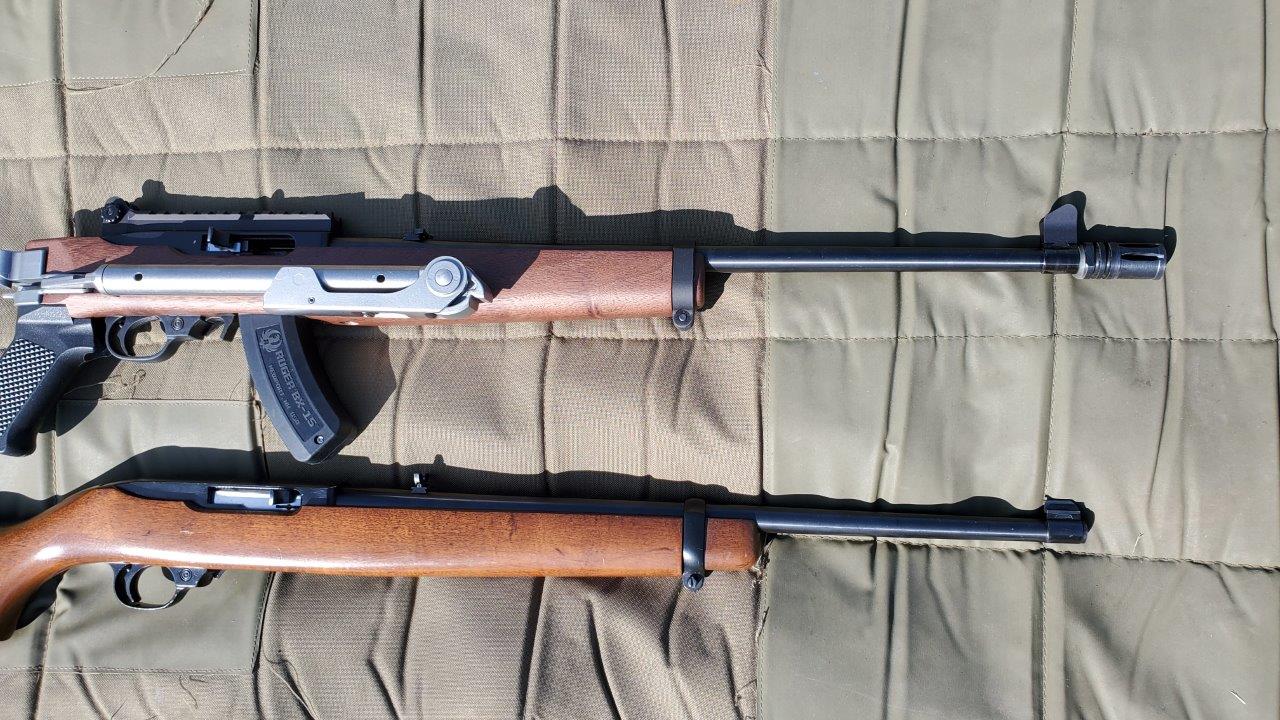
Top: Ruger 10/22 x Samson Sight Package. Bottom: Factory Ruger 10/22 with factory sights. The BX-15 magazine was used between both rifles and was perfect for prone shooting.
The open sights of the factory Ruger are familiar to most shooters who have handled one. The notch and gold bead are just another variation of open sights which attempts to aid in alignment with contrast and placement. The Achilles heel of such systems is that the eye can only focus on one focal point. Everything before or after that point will be out of focus. When attempting to align three components, the target, front sight, and rear… precision is impacted by the fuzzy outline of the rear sight and the target. Remember the front sight is our focal point. Precisely aligning an in-focus orb into an out-of-focus notch can only be done with so much precision.
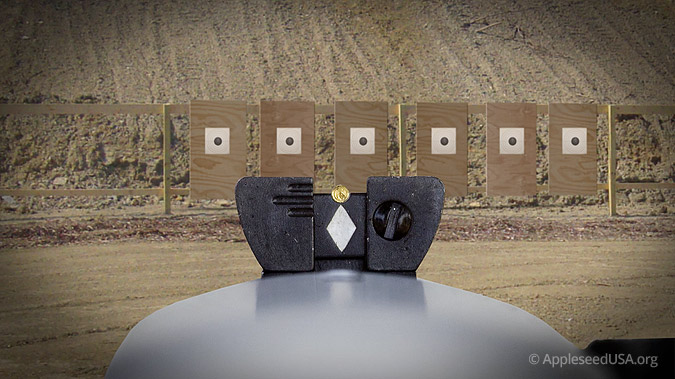
In theory, this is what you are seeing when lining up the Ruger open sights. Image From: https://www.riflemanschallenge.com/aiming.html
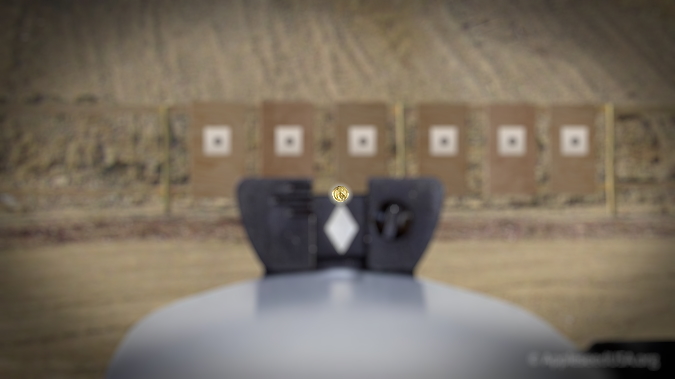
In practice, this is what you actually get: Clear front sight, fuzzy rear, fuzzy target.
In contrast, the peep sights operate on a different mechanism. Since we are looking through the rear sight, which is a pinhole, it improves our ability to focus on things both near and far. Focusing on the front sight becomes easier, and the target remains sharper due to the enhancement of our depth of field. For those without a reference, a simple experiment can be done with an index card and a pinhole poked through it. Extend your finger pointing up as a “front sight” and focus on the tip of your finger. Try and keep it in focus while reading the spine of a book across the room. Now bring up a pinhole poked into an index card in front of your eye and do the same thing. The book spines are much easier to read while focusing on your “front sight”. When there is adequate light, peep sights are superior simply because they give our ability to focus on the front sight AND the target a boost. Remember when you peer through the rear peep, its job is done. Ignore it. Front sight crystal clear, target aligned. Squeeze.
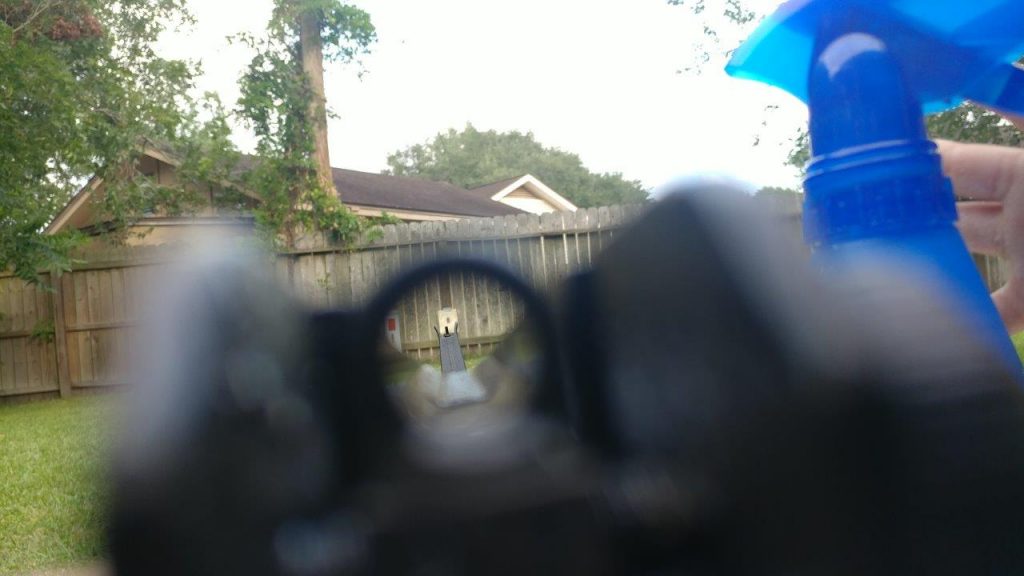
Peep sights let you focus on the front sight and improve the ability to clearly see the target. This improves as the peephole becomes smaller and smaller… at the cost of light.
Results:
I went out on a bright sunny day with no wind. I shot a generic Remmington .22LR load that was over 10 years old. Both rifles shot the same load. Objective results were as expected. A 1.87 MOA reduction in group size was seen by using peep sights vs the open sight. Overall, the verticle dispersion is much less with peeps whereas open sights had more severe vertical dispersion and slightly wider horizontal dispersion.
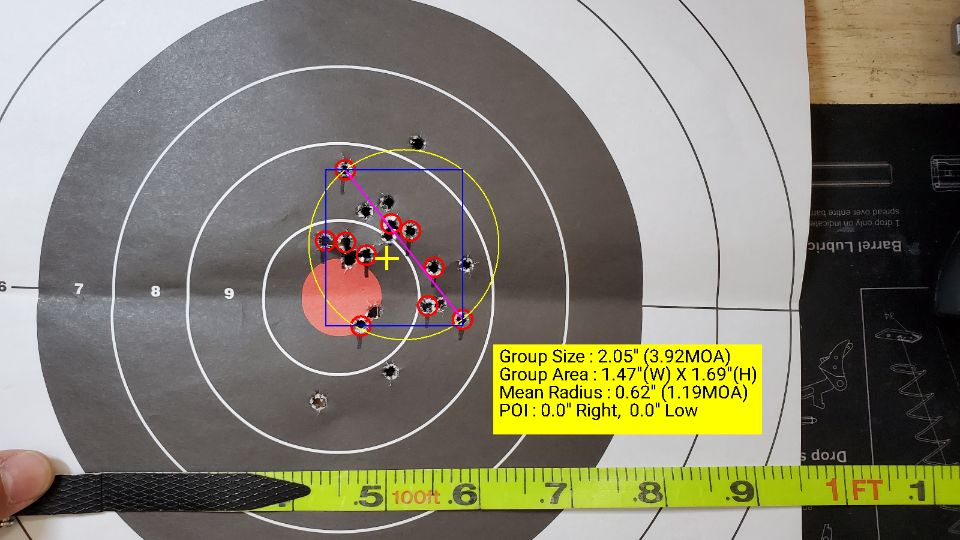
Peep Sights with a long sight radius showed a group size of 2.05 inches / 3.92 MOA.
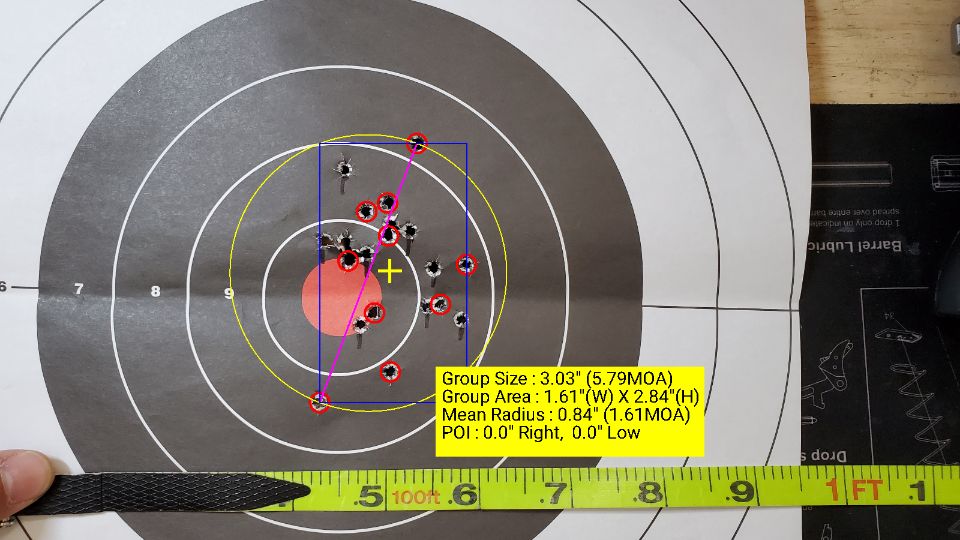
The factory Ruger open sights revealed a 3.03 inch / 5.79 MOA group. Note the verticle dispersion.
It was as expected. Peep sights with their longer sight radius and ability to enhance your focus resulted in a more consistent grouping. The little 10/22 with generic fodder was accurate enough to gauge the difference between sight and shooter performance. It was refreshing to get behind a .22LR again after not having a plinker for many years. The Samson Sight Set was awesome to use, and expect a full review of the setup shortly. Need some parts for your 10/22? Support the site and visit Brownells.com for tons of 10/22 components. Can’t find a 10/22 in stock? PSA has you covered.
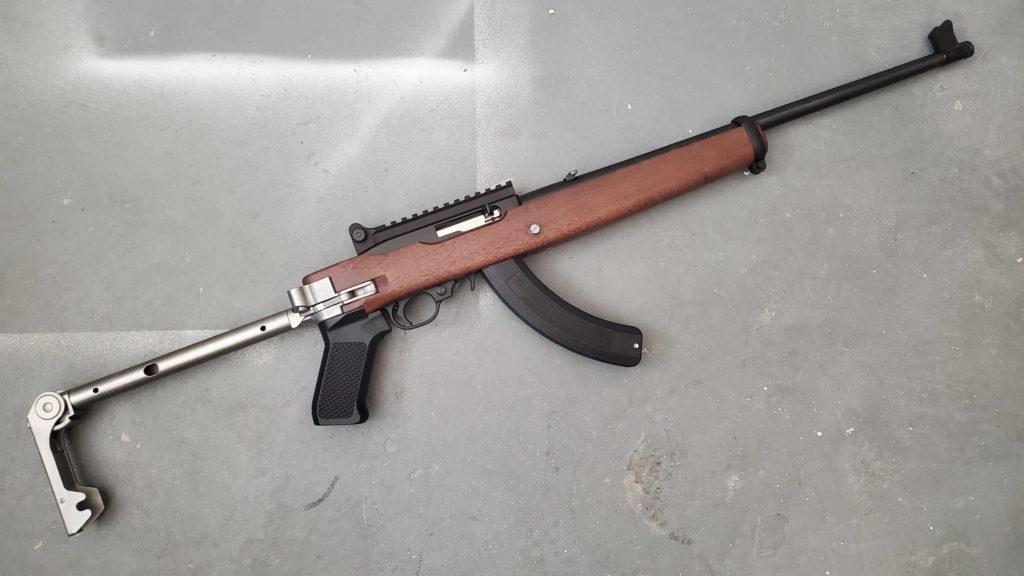
Lothaen Out!





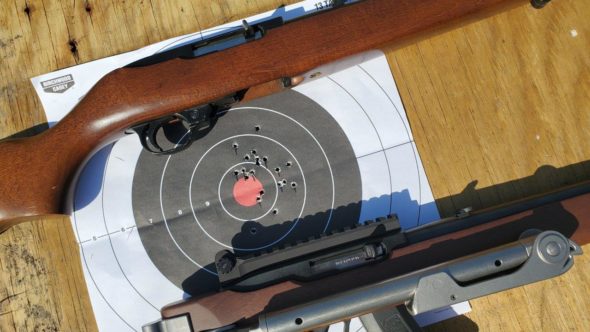



The distance between front and rear primarily affects graduation. Between front sight and eye affects focus. Between rear aperture and eye affects depth of field as you’ve shown. A better test of “radius” would be shorter and longer open sights, or shorter and longer apertured sights. Hmm, an AK versus an M4 with the aperture ground to a notch…
*vs M16
Unfortunate that you were unable to make your comparison of rear sights using identical (or at least similar) stocks and front sights, as many factors can affect accuracy and precision.
That said, my experience and ancient dogma certainly supports your conclusion. A good first step in making a new rifle field-ready is to give it a decent set of irons — replacing any barrel-mounted leaf sight with an adjustable tang or receiver mounted aperture. Then swivels, optics, and other doo-dads as desired.
Excellent comparison of the sights, however I’d like to correct a few points.
The claim that the eye can only focus at one distance is incorrect: this is the very notion of depth of field. The definition of 20/20 vision is the ability to resolve 1 MOA. Once blur on an object becomes less than about 0.5 MOA, it is smaller than the gap between the photoreceptors on your retina, and it is no longer visible. Hence, there is actually a range of +/- focal error which still appears in perfect focus. As you point out, how big this range is, is driven by aperture size. With notch sights, this aperture is the pupil of your eye. Indoors, in poorly lit ranges, the pupil dilates to create about an f:2.8 aperture, and this is why pistol shooters with iron sights struggle. Outdoors, your pupil constricts, and your eye becomes a f:8 lens, with a much better depth of field. If you go further, and add a peep sight of 0.070″, your eye is an f:14 lens.
The other point of contention is that you do not focus on the front sight. In order to achieve the best sight picture, your brain will focus at a point that gives you the best average focus of the objects you are trying to juxtapose. With a peep sight, you focus at the average of the target and the front sight, which is referred to as the hyperfocal distance in photography, and this focal point will center your depth of field between the front sight and the target. Notch sights require that you also focus on the notch. Since the notch is about half the distance to your eye that the front sight is, you need a depth of field that is twice as big to achieve this (lens equations are all based on inverse-distances). Hence the notch sight is a poor compromise: closer to your eye gives you a better sight radius, but challenges your focus at the extreme edges of your depth of field, moving the notch forward (as in a pistol), marginally decreases the focal challenge, but makes sight alignment more difficult. The peep sight, being round, can be centered without focus, by relying on the symmetry of the image.
One final point on the vertical dispersion of your shot group with the notch sights, this is because of drifting focus in your eye. Inconsistent focus means that the width of the blur line, and hence the apparent size of the front sight is changing. As you have two vertical edges on the front sight, the aforementioned symmetry still allows good judgement of windage, as both sides of the front sight are fuzzy and fat, or sharp and thin as your focus drifts. However there is only one top edge to the sight, so a drift in focus results in a drift in apparent height of the front sight, causing a vertical dispersion of the shot groups. This effect is more apparent in people above about 40-45 years of age, as presbiopia sets in, and the ability to maintain steady close-up focus is diminished. The solution, as with reading, is to add a positive diopter lens (similar to reading glasses), but where the strength of the lens is calculated such that the eye’s relaxed focus falls at the correct hyperfocal distance of the sights.
Have you considered trying out the Ruger BX drop-in trigger on one of your 10/22s?
I put one in mine and it’s now probably my favorite rifle.
Only other mod I’ve done was adding Tech-Sights front/rear for much better sighting on target.